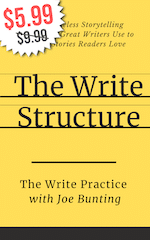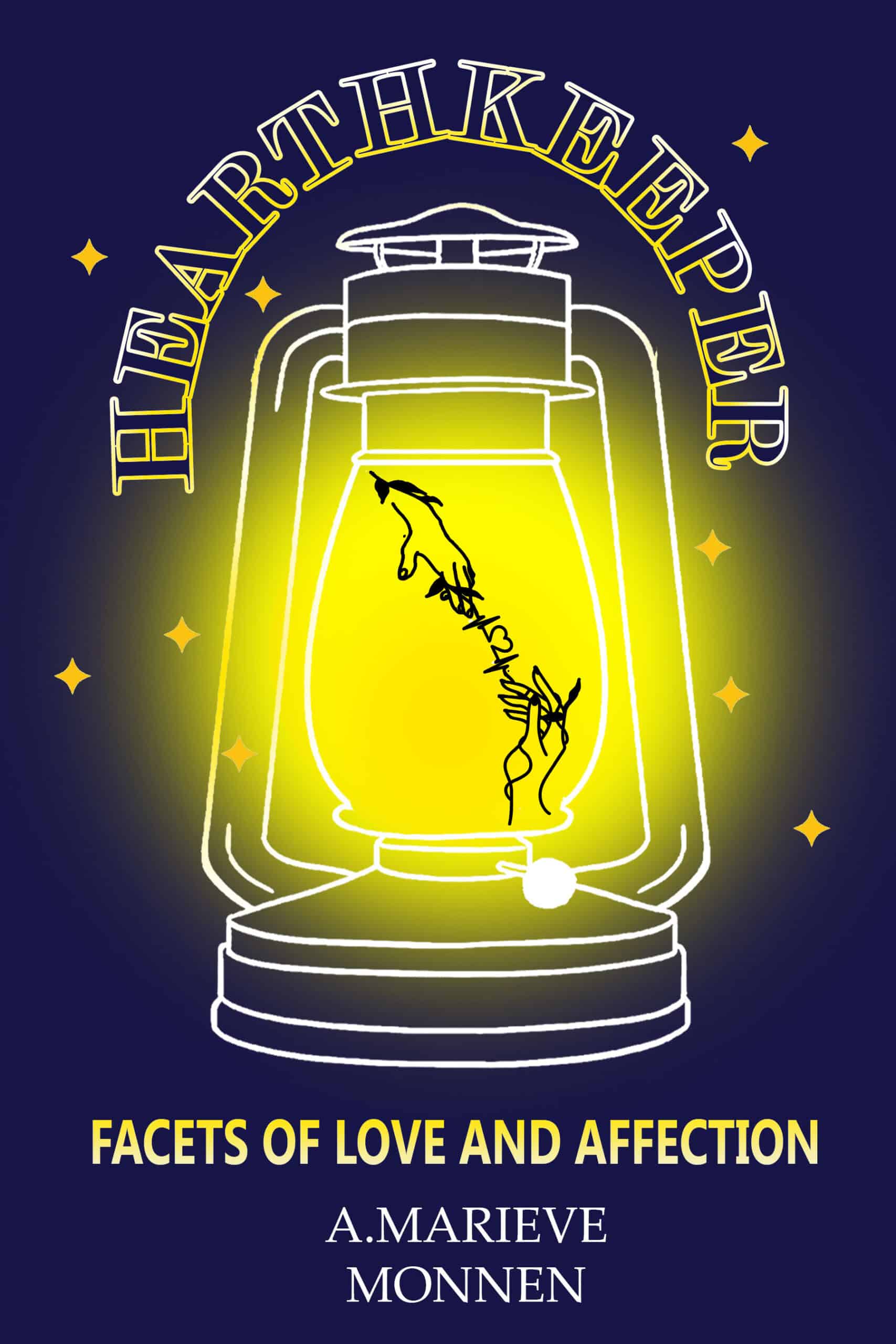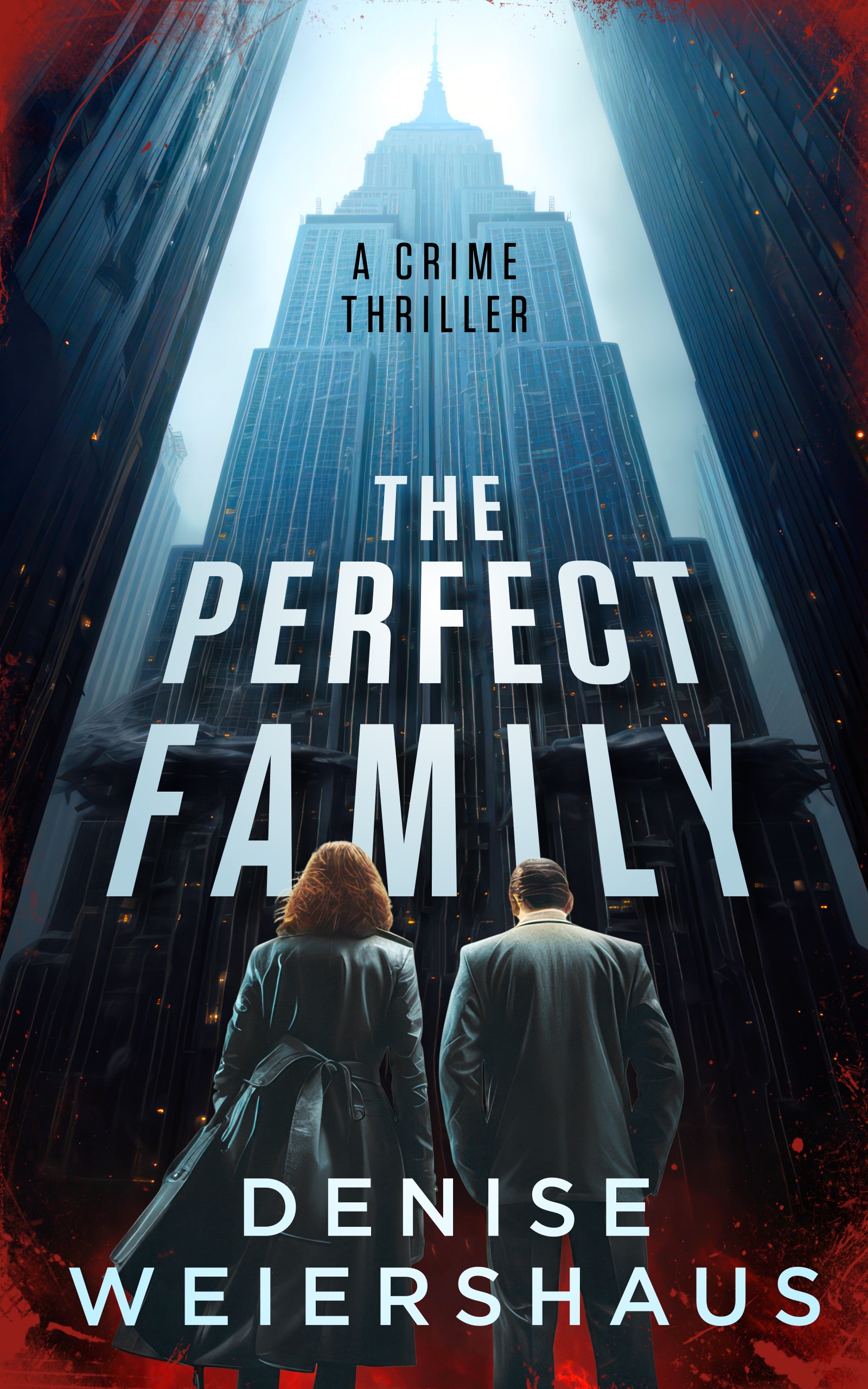Posing a good dramatic question in the minds of your readers is the best way to create suspense and keep people reading. In Monday's post, we talked about what the dramatic question is. Today we're going to talk about how to use it effectively.
Here are seven steps to create suspense with the dramatic question:
1. Make the Reader Care About the Answer
You're writing a thriller about a spy who puts herself in constant danger to fight her arch enemy for the sake of her country, posing the dramatic question, “Will she survive and save her people?” Pretty standard stuff.
However, if your heroine is whiny, annoying, and mean spirited, if we don't find her sympathetic in some way (even if she's not likeable), then your readers aren't going to care as much about whether she survives or not. On top of that, if your villain isn't a hateable mastermind, but actually a weakling guy that's actually pretty nice, no one is going to root for your heroine to defeat him. And worse, if the country she's fighting for is full of whiny, annoying, mean spirited people, then we might even root against her.
Before you pose the dramatic question, spend time introducing your characters:
- Introduce your protagonist (show don't tell us why we should root for her)
- Introduce your supporting cast (other interesting and / or likeable characters on your protagonist's side we can root for)
- Introduce your villain (if they aren't incredibly interesting and powerful, it makes your protagonist less interesting and powerful)
2. Pose It In Time
If you pose the dramatic question too early, the audience won't care about your cast enough to care about the dramatic question. If you pose it too late, your readers will get bored and set your book down.
Most people I read say the right time to pose the dramatic question is between 1/6 and 1/3 of the way into your story.
3. Build Tension With Small Losses and Small Wins
You don't want to answer the dramatic question right away. That would be boring. Instead, build up tension by creating a series of minor battles, with small losses and wins.
For example, let's say your dramatic question is, “Will Inspector Peugeot solve the murder mystery?” To build tension, insert a red herring by having the Inspector find a clue that leads to a chase scene with a suspect. Then, when they finally catch him (win!) it turns out he isn't actually the killer (loss!).
4. Foreshadow
In the best stories, you can look back and see clues to the outcome of the dramatic question all through the story, so that everything leads up to that final climax where the dramatic question is answered.
For example, in the Sixth Sense, the dramatic question is, “Can Bruce Willis help Haley Joel Osment with his craziness?” The answer is, of course, (spoiler alert if you somehow have not seen this movie in the last thirteen years and still want to be surprised) no, but Haley can help him. Of course, as soon as we learn the truth that Bruce is actually dead, we see the clues, the foreshadowing, all through the story.
5. If the Dramatic Question Were a Test, Make Your Protagonist Think They Passed
One good way to build suspense is to have a false success, where the protagonist thinks they've solved the dramatic question, they save the world, they helped Haley Joel Osment, they solved the murder. Let your protagonist revel in their success for a while. Then, pull the rug out from under them.
Hard.
6. If the Dramatic Question Were a Test, Make Your Protagonist Fail
After you make your protagonist think they passed, make them fail.
This is a time honored technique, used by Homer himself. Odysseus is within sight of home when his men, driven by greed, open the bag containing three of the four winds, blowing their ship back most of the way they came.
This creates the dark night of the soul, the death which is necessary in every story in order to create change in the protagonist.
7. Don't Give Away the Answer—Until You Do
The key to supense is not to answer the dramatic question too soon. Think of it as a dance, a tango. You're dancing with the reader, twirling around their emotions, bringing them close and then pushing them away, allowing them to think they've got you and then slipping through their grasp. This is what drama is all about, whether you're writing thrillers, mystery, or romance.
The surprising truth reader may even know where the dance is going to end up. They may already know the answer to the dramatic question. Still, they'll stick with you because in the end, it's not even about the dramatic question. It's about the dance leading up to it.
Further Reading
The Dramatic Question by Doug Ebock
Dramatic Question by Tracy Culeton
 Need more plot help? After you practice this plot element in the exercise below, check out my new book The Write Structure which helps writers make their plot better and write books readers love. Low price for a limited time!
Need more plot help? After you practice this plot element in the exercise below, check out my new book The Write Structure which helps writers make their plot better and write books readers love. Low price for a limited time!
PRACTICE
Write a scene where you attempt one of the seven steps.
Write for fifteen minutes
When you're finished, tell us which step you were practicing and post your practice in the comments.
And if you post, be sure to comment on a few others.
Joe Bunting is an author and the leader of The Write Practice community. He is also the author of the new book Crowdsourcing Paris, a real life adventure story set in France. It was a #1 New Release on Amazon. Follow him on Instagram (@jhbunting).
Want best-seller coaching? Book Joe here.




I worked on a combination of 5 and 6. This was just what I needed to move me forward at a stage of my book I was having trouble with!
***
The door closed quietly behind Cole. Vi hung her head; the sting of Cole’s words lacing her heart. How could her best friend think such awful things about her? She wasn’t self absorbed was she? For goodness sakes she’d just had a baby; a baby with Down syndrome and a heart defect. Surely she deserved to think about herself for a while.
Vi stood and walked to the window. She could just make out the retreating shape of her best friend as she passed under the sprawling arms of an oak,. If she was honest with herself she new what Cole had said was true. A hot flush colored her cheeks with shame. She had to admit she had acted the part of prima donna, even before Jenny was born. How many other people had she neglected or pushed aside because of her absorption with her own problems and self interests. Her husband, Jim, had probably felt the cloud of neglect as well.
She had receive such support through her pregnancy and the birth of Jenny. Cole and Jim had been sources of strength and encouragement. Embarrassed she realized she couldn’t remember the last time she had asked Cole how her already rocky marriage was doing.
Cole’s words still hung like the last quavery notes of a violin trembling in the air, “You’re not the only one with pain.” Vi’s hand dropped the lace curtain and fell to her side woodenly. Slumping into the closest chair, she cried.
This is really great! Thanks for sharing it with us all. I really like how she is truly having to take a look at herself and question her actions in the recent past. Many times, characters (and people) seem to just blithely go on their way without worrying about anything else. I’m guess Cole’s not gone forever, but Vi will have to figure out a way to make things up to her. And if this is in the last 1/3 of your story, even better so that your main character can have some continual grown throughout!
This is #1. Introducing my protagonist and antagonist.
As I came to, I quickly jumped up out of my bed and began stripping down both the bed and myself. I was relieved that my buddy Jack hadn’t spent the night with me, considering the big mess I had just made. It was so humiliating anytime I had an accident but it was especially mortifying when it happened during a sleepover. I gathered up my wet boxers and bed sheets and headed to the washing machine. Gran had taught me how to do my own laundry just in case this ever happened. I hadn’t bothered to put on any clean underwear yet. I was too intent on getting the sheets in the wash before dad came home and found out I had wet the bed again.
I peeked down the hallway to make sure the coast was clear. Gran’s bedroom door was closed and no light was coming from under her door. I could hear her snoring from the hallway. Dad usually worked late at the filling station on Friday nights, so I assumed the coast was clear. But as I turned the corner towards the kitchen I spotted my dad’s dark silhouette in his recliner. He was watching something on TV, but had the volume turned all the way down. I stood there in silence for a moment, trying to stay invisible in the dark hallway. When my eyes finally adjusted to the bright light of the television, I realized Dad was watching one of his “adult movies.” I knew I wasn’t supposed to watch his porn so I instinctively shut my eyes while hurrying into the kitchen. My little toe caught the metal leg of the table sending me to the floor in agony.
While writhing on the floor, I could hear my dad grunt as he jumped out of his recliner. He came around the corner and turned on the kitchen light. His face was flushed which meant one of two things; he was either angry or drunk. I suspected both. When he saw me lying there on the kitchen floor, naked, rubbing my little toe, he groaned in deep exasperation. Smoke from the last drag of his cigarette escaped his mouth like an angry dragon. He came closer and stood over me. It was then I noticed his big thing poking out his boxers. He awkwardly adjusted himself while I quickly looked away.
“What the hell are you doing?!” he demanded.
“I…I stubbed my toe,” I whimpered. Not wanting him to see my little thing, I reached for my wet sheet to cover up.
“Well, that’s what you get sneaking around in the dark,” he replied. “And where are your clothes?”
“I wet the bed and I was…”
“Damn it boy!” Dad interrupted, “You’re almost thirteen goddamn years old and you’re still wettin’ the bed?!” His eyes were glazed and bloodshot. Red blotches covered his neck. “What the hell is wrong with you?! Lying there like you need your diaper changed. When are you gonna grow up?”
Before I could answer, Dad reached down and grabbed me by the ankle and started dragging me, bare ass and all, across the kitchen linoleum. I was still clinging desperately to my bed sheets as we continued through the living room, heading towards the front door. I tried propping myself up with my arms so my rear wouldn’t get scraped across the metal threshold of the doorway, but it was no use. He was dragging me so fast, my arms couldn’t keep pace and my butt hit the threshold on the way out the door. I heard the screen door slam shut behind me as I rolled across the porch. My bed sheets wildly enveloped me in a wet cocoon. Dad walked towards me as I was trying to get up to defend myself. But he lunged forward and pushed me back to the ground. He yanked one end of my sheet with such force; I actually came up off the ground and started spinning around, unfurling the sheet as I descended downward. My scraped and bloody backside began to quiver as it landed on the rough concrete floor of the front porch. He gathered up the sheet, wadding it into a tight ball and threw it as high as he could into the sycamore tree next to the house. He turned back towards me and shouted in a deep, husky whisper, “Tyler, you’re going to stay out here until you can promise me you will stop peeing in the bed like a little baby. Do you hear me?!”
“Yes Sir” I answered with a shiver of fear and hatred.
“You better do something before morning or everyone who drives by will get a peek at just how much of a baby you still are.” Dad said with a smirk before stammering back inside. As I heard him lock the door, I started crying.
Thanks for the tips! I’m just starting my second novel (Romantic Suspense) and this was really helpful. Why is writing a squeal harder than the original? I need all the help I can get. 🙂
….anybody else wondering wear the other legs are in the photograph?! Seriously… that’s bothering me. What happened to the spider’s legs???
These are very helpful tips! Thanks for sharing. Here’s my, I guess you could say, suspenseful moment I’ve been working on:
She stared up at him, her eyes twinkling in the moonlight. He smiled back at her and grabbed her hand in a gentle manner. The two stared at the water in front of them in total silence. Suddenly Noah coughed into his arm. Wiping his mouth and beard he glanced at Mia meekly.
“Sorry,” he whispered, chuckling.
“It’s alright,” Mia sighed. “Isn’t it beautiful out here?”
Noah nodded, and turned around facing the young woman. She at him. It seemed as though the world froze as they neared closer and closer, eyes closed. They were just about to kiss when Noah drew back and violently coughed.
Mia’s eyes widened in horror when she saw he was spitting up blood. Rushing over she tried patting him on the back.
“Are you okay?” Mia said, frightful.
“I-I’m,” he sputtered and coughed. Quickly he shook his head and seemed to sink down onto the ground.
Mia fumbled in her purse for her phone. Quickly she dialed 911.
“Hello, 911, please state your problem,” the receiver said.
“My-my,” Mia’s hands shook as she held up the phone to her face.
“Ma’am where are you?” the voice pressed on the phone.
“We’re at B-blue Birds Park,” Mia said, her voice getting more and more tense. “Please hurry!”
The person over the phone assured her and hung up. As Mia put her phone back in her purse she looked down, only to see an unconscious and sickly pale man. The young woman knelt down and held up his head. Blood got all over her hands, as she wept, clinging onto him.
“Don’t go,” she whispered, shaken. “Please don’t go.”
I love the way the moment changes the reader’s emotions from a happy feel of romance to panic. I’d suggest not making the moment pass so quickly though, make the panic she feels really hit the reader hard. Maybe have the man say something that the young woman finds devastating.
This is a major reason why the pilot of Star Trek: Discovery convinced me that I never want to see another episode. The protagonist is such an emotionally unstable, arrogant jackass that it’s impossible to like her. Of course, the fact that the other characters don’t act rationally, and the story makes no sense, reinforces this impression.
I also think that the dramatic question was posed too early. We don’t get a chance to really know most of the characters before the action happens. They’re basically just ciphers.